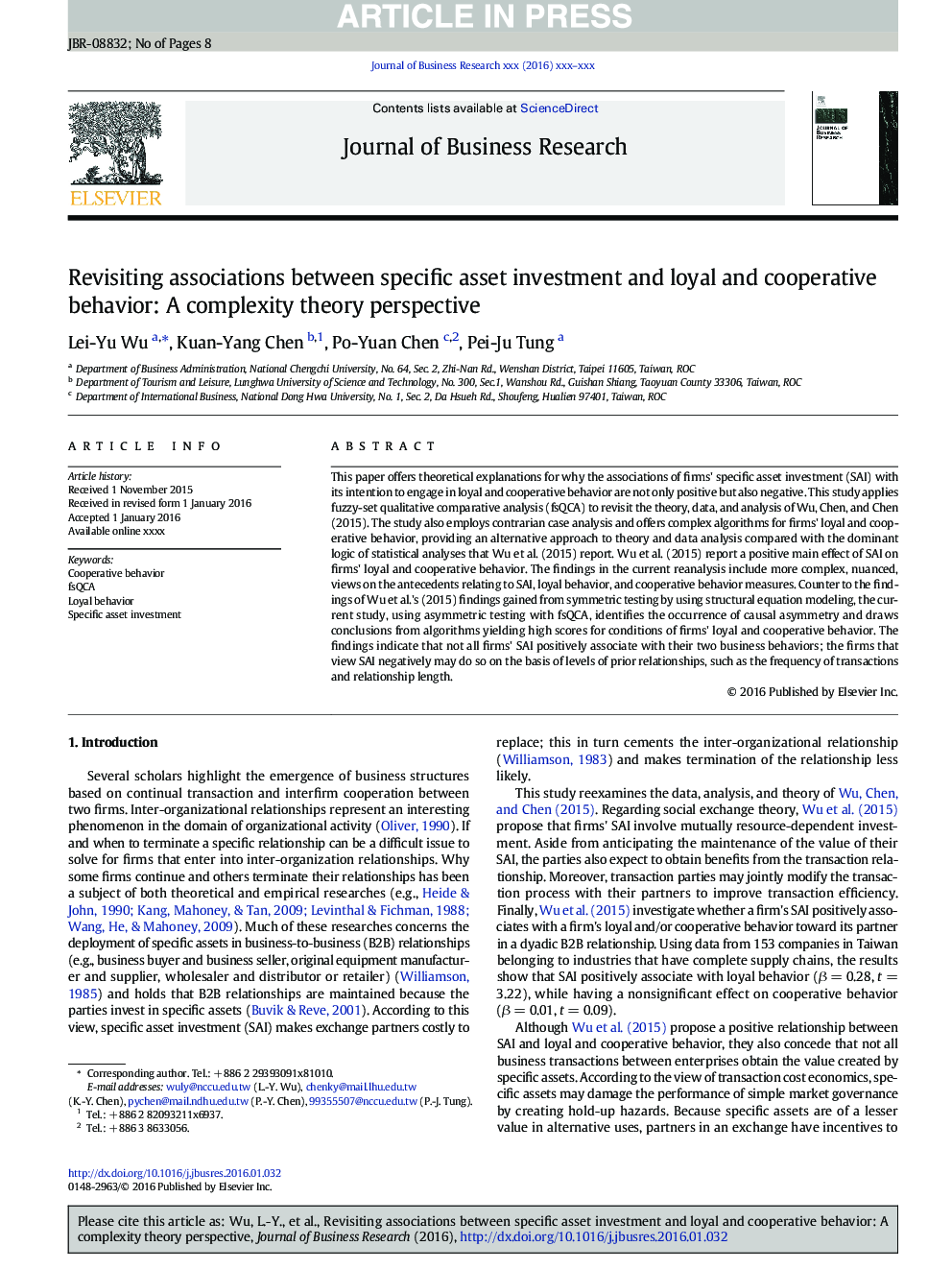| Article ID | Journal | Published Year | Pages | File Type |
|---|---|---|---|---|
| 10492522 | Journal of Business Research | 2016 | 8 Pages |
Abstract
This paper offers theoretical explanations for why the associations of firms' specific asset investment (SAI) with its intention to engage in loyal and cooperative behavior are not only positive but also negative. This study applies fuzzy-set qualitative comparative analysis (fsQCA) to revisit the theory, data, and analysis of Wu, Chen, and Chen (2015). The study also employs contrarian case analysis and offers complex algorithms for firms' loyal and cooperative behavior, providing an alternative approach to theory and data analysis compared with the dominant logic of statistical analyses that Wu et al. (2015) report. Wu et al. (2015) report a positive main effect of SAI on firms' loyal and cooperative behavior. The findings in the current reanalysis include more complex, nuanced, views on the antecedents relating to SAI, loyal behavior, and cooperative behavior measures. Counter to the findings of Wu et al.'s (2015) findings gained from symmetric testing by using structural equation modeling, the current study, using asymmetric testing with fsQCA, identifies the occurrence of causal asymmetry and draws conclusions from algorithms yielding high scores for conditions of firms' loyal and cooperative behavior. The findings indicate that not all firms' SAI positively associate with their two business behaviors; the firms that view SAI negatively may do so on the basis of levels of prior relationships, such as the frequency of transactions and relationship length.
Keywords
Related Topics
Social Sciences and Humanities
Business, Management and Accounting
Business and International Management
Authors
Lei-Yu Wu, Kuan-Yang Chen, Po-Yuan Chen, Pei-Ju Tung,
